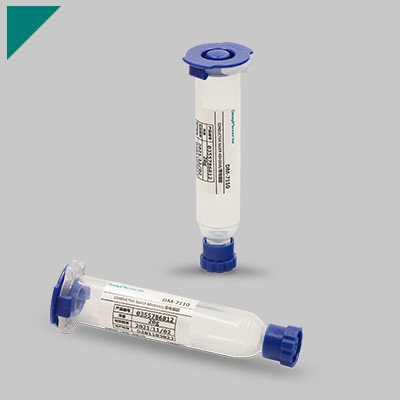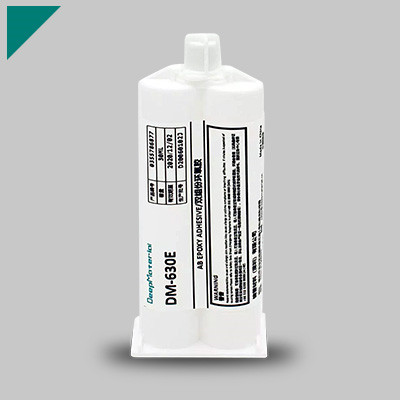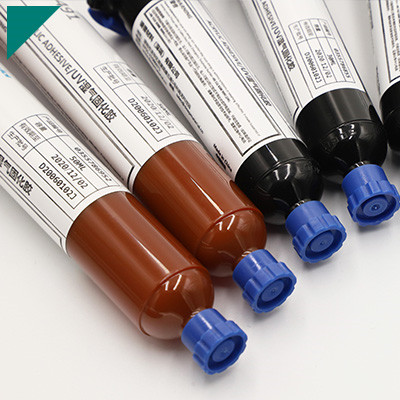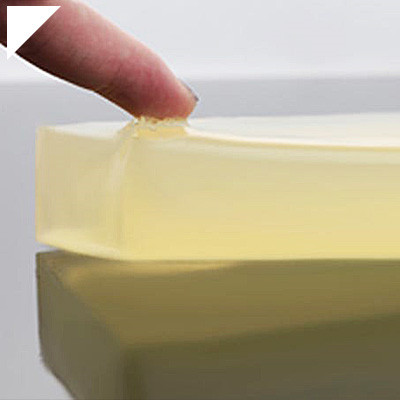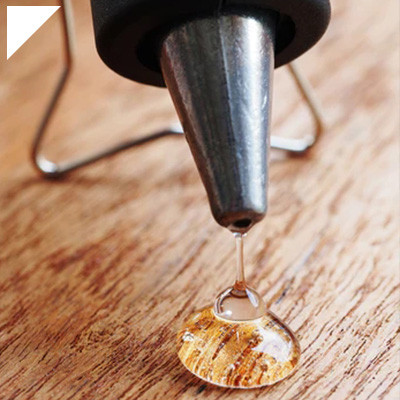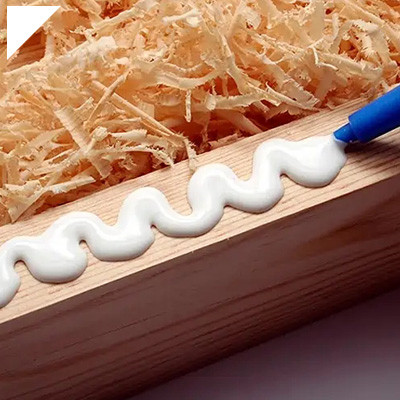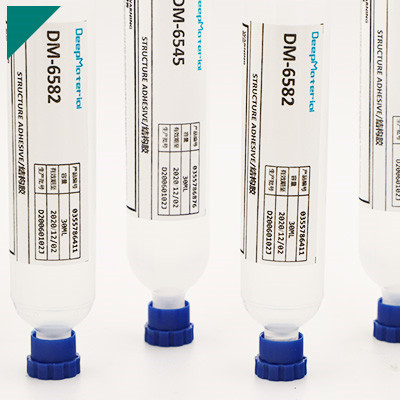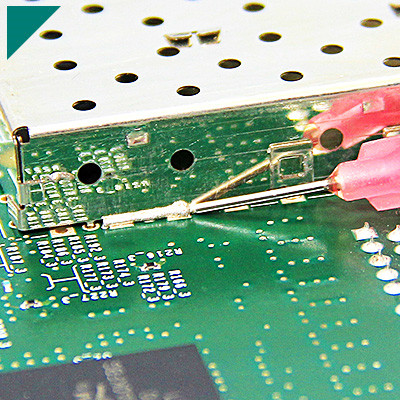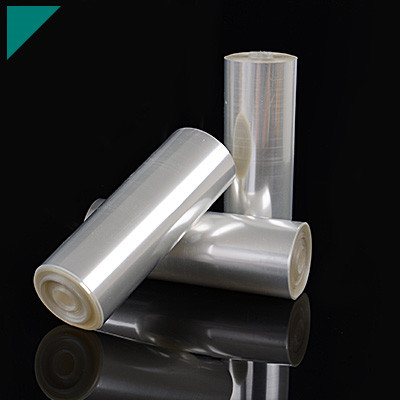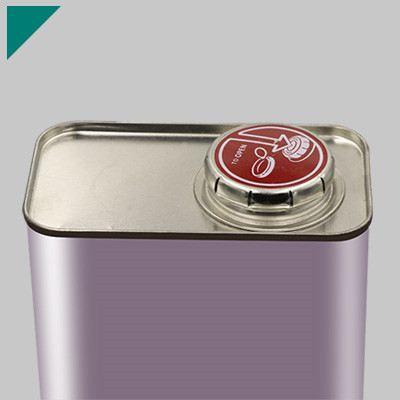Epoxy Conformal Coating

Welcome to our comprehensive guide on epoxy conformal coating, a vital aspect of electronic protection and insulation. Below, we delve deep into the intricacies of epoxy conformal coatings, exploring its uses, benefits, application methods, and much more. Whether you’re a seasoned professional or a newcomer in the field, this guide aims to provide you with a comprehensive understanding of epoxy conformal coatings.
Table of Contents
ToggleWhat is epoxy conformal coating?
In the production and assembly of electronics, epoxy conformal coating is a specialized compound that shields printed circuit boards (PCBs) and other delicate electronic components from elements, including moisture, dust, chemicals, and temperature changes. This coating forms a thin protective layer that conforms precisely to the contours of the electronic assembly, hence the term “conformal.”
One of the primary functions of epoxy conformal coating is to provide insulation and prevent corrosion on PCBs, which can extend the lifespan and reliability of electronic devices. The coating also enhances the electrical insulation properties of the PCB, reducing the risk of short circuits and other electrical failures.
Applying epoxy conformal coating is typically done through various methods, including spraying, dipping, brushing, or selective coating. Every approach has its benefits and is selected according to many criteria, including the required degree of accuracy and coverage and the intricacy of the PCB construction.
Epoxy conformal coatings come in different formulations tailored to meet specific requirements. These formulations may vary in viscosity, curing mechanisms (such as thermal or UV curing), chemical resistance, thermal conductivity, and flexibility. Choosing the proper formulation is crucial to ensure compatibility with the coated electronics and achieve the desired level of protection.
One key benefit of epoxy conformal coating is its ability to withstand harsh operating environments. Whether in aerospace, automotive, industrial, or consumer electronics applications, these coatings offer reliable protection against moisture, dust, vibrations, and thermal cycling, thereby improving electronic devices’ overall reliability and performance.
Furthermore, epoxy conformal coatings provide added mechanical strength to the PCB assembly, helping to reduce the risk of damage during handling, transportation, and operation. It can be essential in rugged applications where electronic devices are subjected to high levels of mechanical stress.
How does epoxy conformal coating protect electronic components?
In electronic engineering, safeguarding delicate components against environmental factors is paramount. Epoxy conformal coating emerges as a frontline defense, ensuring longevity and reliability. Let’s delve into how this innovative solution shields electronic components.
How Does it Protect Electronic Components?
- Moisture Barrier:Epoxy conformal coating forms a barrier against moisture, preventing corrosion and short circuits caused by environmental humidity.
- Chemical Resistance:It shields against various chemicals, safeguarding components from corrosive substances encountered in multiple applications.
- Mechanical Protection:The coating extends the life of electronic assemblies by acting as a barrier against physical harm like abrasion and impact.
- Insulation:Epoxy conformal coating provides electrical insulation, reducing the risk of electrical shorts and breakdowns due to dust or debris accumulation.
- Temperature Stability:It enhances thermal management, offering resistance to high temperatures and ensuring consistent performance even in harsh operating conditions.
Application Techniques
- Spraying:Epoxy conformal coating can be applied via spray equipment, ensuring uniform coverage over complex geometries and tight spaces.
- Dipping:Components can be immersed in an epoxy resin bath, allowing for complete encapsulation and coverage.
- Brushing:For selective coating or touch-up applications, brushing offers precision and control over the coating process.
Benefits of Epoxy Conformal Coating
- Reliability:By providing robust protection against environmental factors, epoxy conformal coating enhances the reliability and longevity of electronic assemblies.
- Cost-Effectiveness:Investing in protective coatings reduces the need for frequent repairs and replacements, ultimately lowering maintenance costs.
- Versatility:The epoxy conformal coating is compatible with many substrates and electronic components, making it suitable for diverse industry applications.
- Regulatory Compliance:Many industries require adherence to stringent environmental protection and safety standards. The epoxy conformal coating helps meet these regulatory requirements by safeguarding against potential hazards.
What are the different types of epoxy conformal coatings available?
Epoxy conformal coatings are essential for shielding electronic equipment from the elements, including chemicals, dust, moisture, and temperature changes. These coatings provide a protective layer that adheres to the contours of electronic components, ensuring reliability and longevity. To choose the best epoxy conformal coating for a particular application, one must be aware of several varieties available. Let’s delve into the world of epoxy conformal coatings and explore the different types:
Standard Epoxy Conformal Coatings:
- These coatings offer essential protection against environmental hazards.
- They provide excellent adhesion and chemical resistance.
- Standard epoxy coatings are suitable for many applications but may lack certain specialized features.
Modified Epoxy Conformal Coatings:
- Modified epoxy coatings are formulated to enhance specific properties such as flexibility or thermal conductivity.
- They offer improved resistance to thermal shock and vibration.
- These coatings are ideal for applications where additional durability and performance are required.
UV-Curable Epoxy Conformal Coatings:
- They offer fast processing times and can be easily applied using automated dispensing equipment.
- UV-curable coatings provide excellent protection while minimizing production downtime.
Thermally Conductive Epoxy Conformal Coatings:
- These coatings are formulated with fillers such as ceramics or metal oxides to enhance thermal conductivity.
- They are ideal for applications where heat dissipation is critical, such as power electronics and LED lighting.
- Thermally conductive epoxy coatings help prevent overheating and prolong the lifespan of electronic devices.
Low-VOC Epoxy Conformal Coatings:
- Low-VOC (volatile organic compound) formulations are environmentally friendly and comply with emissions regulations.
- They offer the same level of protection as traditional epoxy coatings without compromising air quality.
- Low-VOC epoxy coatings are suitable for applications where environmental concerns are paramount.
What are the key properties of epoxy conformal coatings?
In the realm of electronic manufacturing, the durability and longevity of components are paramount. Epoxy conformal coatings emerge as a stalwart solution, offering a shield against environmental hazards while ensuring optimal performance. Let’s delve into the fundamental properties that make epoxy conformal coatings indispensable:
Superior Protection:
- Epoxy conformal coatings provide a robust barrier against moisture, chemicals, dust, and other contaminants, safeguarding delicate electronic assemblies.
- Their exceptional adhesion properties ensure a seamless protective layer over intricate circuitry, preventing corrosion and enhancing reliability.
Excellent Dielectric Strength:
- With high dielectric strength, epoxy conformal coatings effectively insulate electronic components, minimizing the risk of electrical failures and short circuits.
- Because of this characteristic, they are perfect for applications that need dependable insulation in various conditions, such as industrial settings or aerospace systems.
Thermal Stability:
- Epoxy conformal coatings are remarkably thermally stable and can survive a broad temperature range without losing functionality.
- Whether exposed to extreme heat or cold, these coatings maintain their protective integrity, ensuring consistent functionality of electronic devices.
Versatile Application:
- Their compatibility with various substrates, including printed circuit boards (PCBs), makes epoxy conformal coatings highly versatile across industries.
- Their adaptability caters to diverse application requirements, from automotive electronics to medical devices, offering tailored protection for different electronic assemblies.
UV Resistance:
- Epoxy conformal coatings boast UV-resistant properties, mitigating the detrimental effects of prolonged exposure to sunlight.
- This property extends the life of coated components in outdoor applications like solar panels and outdoor lighting systems.
Minimal Environmental Impact:
- Many epoxy conformal coatings are formulated to meet stringent environmental regulations, containing low levels of volatile organic compounds (VOCs) and hazardous substances.
- Their eco-friendly composition aligns with sustainable manufacturing practices, creating a cleaner and safer environment.
Ease of Application:
- Available in various formulations, including spray, dip, and brush-on, epoxy conformal coatings offer flexibility in application methods.
- Manufacturers can choose the most suitable application technique based on their production requirements, ensuring efficiency and consistency.
What are the common applications of epoxy conformal coatings?
Epoxy-conformal coatings are a critical component in modern industrial processes, offering a protective layer that enhances the durability and reliability of electronic devices. Their versatility makes them indispensable across various applications, providing robust protection against environmental factors and ensuring optimal performance. Let’s delve into the typical applications of epoxy conformal coatings and understand their significance in diverse industries.
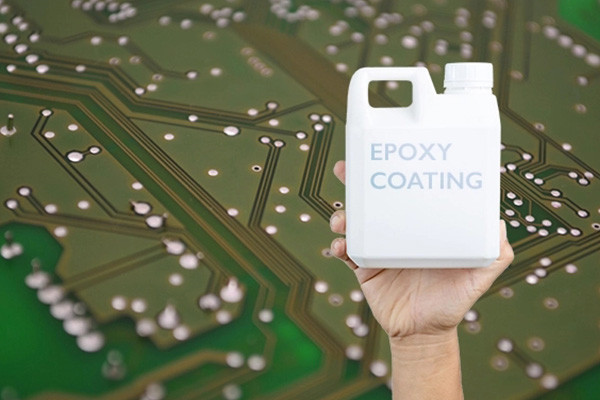
Electronics Manufacturing:
In electronics manufacturing, epoxy conformal coatings protect circuit boards and electronic components from moisture, dust, chemicals, and other contaminants. These coatings provide insulation against electrical currents and prevent corrosion, extending the electronic device’s lifespan.
Aerospace and Defense:
Epoxy conformal coatings provide excellent resistance against severe temperatures, vibration, and humidity, which are critical working conditions in aerospace and defense applications. They are extensively utilized in military equipment, avionics systems, and spacecraft to ensure consistent performance in demanding environments.
Automotive Industry:
The automotive sector relies on epoxy conformal coatings to shield electronic components within vehicles from moisture, heat, and mechanical stress. These coatings improve the dependability of vital components, including ignition systems, sensors, and engine control units (ECUs), which raises cars’ general safety and efficiency.
Medical Devices:
Epoxy conformal coatings are widely used in medical device manufacturing, where precision and reliability are imperative. By forming a barrier against fluids and contaminants, these coatings help maintain the integrity of sensitive electronic components used in medical equipment, implantable devices, and diagnostic instruments.
Telecommunications:
Epoxy conformal coatings protect communication equipment and electronic modules in telecommunications infrastructure from environmental factors such as humidity, salt spray, and pollutants. It ensures the uninterrupted operation of telecommunications networks and enhances the reliability of communication systems.
Industrial Automation:
In industrial automation and control systems, epoxy conformal coatings defend against harsh industrial environments characterized by temperature fluctuations, dust, and chemical exposure. By mitigating the risk of electrical failures and component degradation, these coatings contribute to the seamless operation of manufacturing processes.
Consumer Electronics:
From smartphones to home appliances, epoxy-conformal coatings are utilized in consumer electronics to enhance product reliability and longevity. By forming a protective barrier around circuitry, these coatings safeguard devices from everyday wear and tear, moisture ingress, and environmental contaminants, improving product durability and customer satisfaction.
What factors should be considered when selecting an epoxy conformal coating?
Epoxy conformal coatings protect electronic components from various environmental stressors, ensuring their longevity and reliability. However, selecting the proper epoxy conformal coating involves considering several crucial factors to match the specific requirements of your application.
- Environmental Conditions: The environmental conditions to which the electronic components will be exposed are paramount. Considering variables like high or low temperatures, humidity, chemical exposure, and possible abrasion or mechanical stress is essential. Choose an epoxy conformal coating with properties that can effectively withstand these conditions.
- Substrate Compatibility: Compatibility with the substrate material is essential to ensure proper adhesion and performance. Different substrates, such as printed circuit boards (PCBs), plastics, or metals, may require specific formulations of epoxy conformal coatings. Conduct compatibility tests to prevent issues like delamination or reduced adhesion.
- Application Method: Consider the preferred application method for the epoxy conformal coating. Whether you opt for spray, dip, brush, or automated methods can impact the coating formulation and viscosity choice. Examine the viability and economics of your selected application method because some coatings may require specific tools or techniques.
- Electrical Properties:Evaluate the electrical properties required for your application, such as dielectric strength, insulation resistance, and conductivity. The epoxy conformal coating should provide adequate electrical insulation to prevent short circuits and leakage currents while maintaining signal integrity.
- Thickness and Coverage: Determine the desired thickness and coverage of the conformal coating based on the level of protection needed and the space constraints of the components. Too thin a coating may not provide sufficient protection, while excessive thickness can lead to issues like cracking or trapping heat. Balancing these factors is crucial for optimal performance.
- Chemical Resistance:Assess the resistance of the epoxy conformal coating to chemicals present in the operating environment, including solvents, oils, acids, and alkalis. A chemically resistant coating will prevent corrosion and degradation of the underlying components, extending their lifespan and reliability.
How is epoxy conformal coating applied?
Epoxy conformal coating is a vital protective layer for electronic components, safeguarding them against environmental hazards such as moisture, dust, chemicals, and temperature fluctuations. Its application process plays a crucial role in ensuring the coating’s effectiveness. Let’s delve into the intricacies of applying epoxy conformal coating.
Preparation of Components
Before applying epoxy conformal coating, thorough preparation of electronic components is essential. It involves cleaning the surface to remove any contaminants that could hinder adhesion. Typically, a combination of solvent cleaning, brushing, and drying techniques is employed to achieve a pristine surface.
Application Methods
There are various methods for applying epoxy conformal coating, each suited to different scenarios:
- Dip Coating:In this method, the electronic component is submerged into a bath of liquid epoxy coating material. The excess coating drips off upon withdrawal, leaving a uniform layer on the surface. Dip coating is suitable for high-volume production as it ensures consistent coverage and requires minimal operator intervention.
- Brush Coating:For smaller-scale applications or selective coating, brush coating proves effective. A brush is used to apply epoxy coating onto specific areas of the electronic component, ensuring precise coverage and control over thickness.
- Selective Coating:This method involves masking certain electronic assembly areas to prevent coating application, leaving them exposed. Selective coating is beneficial for shielding sensitive components or connectors from the conformal coating, thus preserving their functionality.
Curing Process
Once applied, epoxy conformal coating undergoes a curing process to achieve its final properties. The process can be accomplished using several techniques, such as heat curing, UV curing, or room-temperature curing, contingent upon the particular composition of the epoxy coating. Proper curing is required to achieve the required adhesion, durability, and protection against external conditions.
Quality Control
Strict quality control procedures are followed during the application process to guarantee the integrity of the epoxy conformal coating. Visual inspections, thickness measurements, and adhesion tests are performed to verify the uniformity and effectiveness of the layer. Any deviations or defects are promptly addressed to maintain the reliability of the coated electronic components.
What are the key challenges associated with applying epoxy conformal coatings?
Epoxy conformal coatings are thin protective layers applied onto electronic assemblies to safeguard them against moisture, chemicals, dust, and other environmental contaminants. They conform precisely to the contours of the components, providing comprehensive coverage and insulation. This protective barrier shields sensitive electronics from corrosion, electrical shorts, and other forms of damage, extending their lifespan and enhancing performance.
Challenges in Application
Despite their numerous benefits, applying epoxy conformal coatings involves overcoming several challenges:
- Uniform Coverage: Achieving uniform coating thickness across complex electronic assemblies can be challenging. Variations in component sizes, shapes, and orientations often result in uneven coverage, leaving certain areas vulnerable to damage. Ensuring consistent coverage requires meticulous attention to detail and precise application techniques.
- Air Trapping and Bubbles: Entrapped air and bubbles within the coating layer can compromise its integrity and effectiveness. The viscosity of epoxy coatings and the intricate geometries of electronic assemblies make it challenging to eliminate air pockets during application. Proper degassing techniques and optimized viscosity control are essential to minimize air entrapment and ensure a flawless coating finish.
- Curing Considerations: Epoxy conformal coatings undergo a process to achieve their desired properties. However, temperature, humidity, and curing time can significantly impact the coating’s performance. Achieving the optimal curing conditions is crucial to enhance adhesion, durability, and chemical resistance. Deviations from recommended curing parameters may lead to insufficient cross-linking and compromised protection.
- Compatibility with Components: Some electronic components may be sensitive to the solvents and chemicals in epoxy conformal coatings. Incompatible materials can react adversely, causing degradation or malfunction. Assessing the compatibility of coatings with specific components and substrates is essential to prevent compatibility issues and ensure long-term reliability.
- Inspection and Quality Control: Thorough inspection and quality control processes are imperative to verify the integrity and uniformity of the applied coatings. Detecting defects such as pinholes, cracks, or insufficient coverage requires advanced inspection techniques such as optical microscopy or automated inspection systems. Effective quality control measures help identify and rectify coating issues before they compromise the functionality of electronic assemblies.
How do you ensure proper curing of epoxy conformal coatings?
Proper curing of epoxy conformal coatings is essential to achieve optimal performance and reliability in electronic assemblies. Curing refers to the process by which the liquid coating material transforms into a solid film, forming a protective barrier on the surface of the PCB.
Firstly, it is crucial to follow the manufacturer’s instructions regarding the recommended curing conditions for the specific epoxy conformal coating being used. These instructions typically include temperature, humidity levels, and curing time. Deviating from these recommendations can result in incomplete curing or compromised coating performance.
Temperature control during the curing process is critical. Most epoxy conformal coatings require exposure to elevated temperatures to initiate and accelerate the curing reaction effectively. This temperature is typically within a specific range, and variations outside this range can lead to incomplete curing or other issues. Therefore, precision heating equipment such as ovens or infrared lamps is advisable to maintain consistent and accurate curing temperatures.
Furthermore, ensuring adequate airflow around the coated PCBs can help facilitate curing. Proper ventilation helps to remove any volatile components emitted during curing, preventing the formation of bubbles or defects in the coating. Additionally, adequate airflow helps to distribute heat evenly across the surface of the PCB, promoting uniform curing and preventing localized overheating.
Monitoring curing time is essential to prevent under-curing or over-curing of epoxy conformal coatings. While insufficient curing can result in a coating that is soft, tacky, or prone to delamination, over-curing can lead to brittleness or degradation of coating properties. Therefore, it’s essential to adhere to the specified curing time recommended by the coating manufacturer and avoid excessive exposure to curing conditions beyond what is necessary.
Regular inspection of cured coatings is advisable to ensure quality and reliability. Visual inspection can help detect defects or irregularities in the coating, such as bubbles, cracks, or incomplete coverage. Additionally, adhesion tests and electrical insulation resistance measurements can further assure coating performance and reliability.
What are the potential defects in epoxy conformal coating application?
Epoxy conformal coating is widely used in electronics manufacturing to protect circuit boards from environmental factors such as moisture, dust, chemicals, and temperature variations. However, improper application or environmental conditions can lead to defects that compromise the effectiveness of the coating. Understanding these potential defects is crucial for ensuring the reliability and performance of electronic devices. Here are some common issues to be aware of:
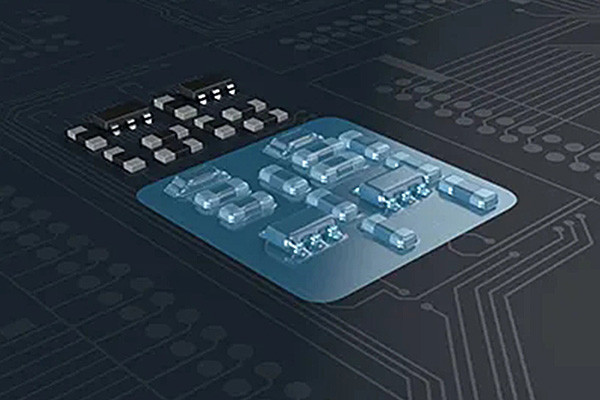
Inadequate Coverage:
- Uneven application may result in areas with insufficient coating thickness.
- Gaps or voids in coverage leave sensitive components vulnerable to damage.
- Pinholes and Voids:
- Improper mixing or application can lead to the formation of pinholes or voids in the coating.
- These defects allow contaminants to penetrate the coating and reach the underlying components.
- Delamination:
- Delamination may result from inadequate conformal coating to substrate adhesion.
- Factors such as surface contamination or incompatible materials may contribute to this issue.
- Cracking and Flaking:
- Excessive coating thickness or inadequate flexibility of the epoxy can result in cracking or flaking over time.
- Mechanical stresses during handling or thermal cycling may exacerbate this problem.
- Bubble Formation:
- Entrapped air or moisture during application can lead to the formation of bubbles within the coating.
- Bubbles not only compromise the aesthetics but also weaken the protective properties of the coating.
- Curing Irregularities:
- Improper curing conditions, such as insufficient time or temperature, can lead to incomplete polymerization.
- It may result in a soft or tacky coating prone to damage or contamination.
- Contaminant Entrapment:
- Dust, debris, or other contaminants on the substrate or environment can become trapped within the coating during application.
- Contaminants may cause localized corrosion or electrical malfunction if not adequately addressed.
- Electrical Shorts:
- Conformal coating bridging adjacent conductive traces or components can lead to unintended electrical connections.
- Careful masking and application techniques are essential for preventing shorts.
How do you troubleshoot common issues with epoxy conformal coatings?
Epoxy conformal coatings are widely used in electronic assemblies to protect sensitive components from environmental factors such as moisture, dust, and chemicals. While these coatings offer excellent protection, encountering issues during application or curing is not uncommon. Here’s a guide on troubleshooting common problems associated with epoxy conformal coatings:
Problem: Incomplete Coverage
- Cause:Inadequate spraying technique, improper viscosity of the coating, or insufficient coating thickness.
- Solution:Ensure proper surface preparation, including cleaning and drying. Adjust spraying parameters such as pressure and nozzle distance for uniform coverage. Verify coating viscosity according to manufacturer recommendations.
Problem: Fish Eyes or Cratering
- Cause: Contamination on the surface, such as oils, residues, or silicone.
- Solution: Thoroughly clean the substrate before coating application. Use compatible cleaning solvents and ensure proper drying. Avoid silicone-based products in the vicinity of the coating process. If contamination persists, consider using a primer or adhesion promoter.
Problem: Orange Peel Texture
- Cause:Incorrect spraying technique, improper viscosity, or inconsistent drying conditions.
- Solution: Practice proper spraying technique, maintaining a consistent distance and speed. Adjust viscosity as per manufacturer recommendations to achieve optimal flow. Ensure uniform drying conditions, including temperature and humidity control.
Problem: Poor Adhesion
- Cause: Surface contamination, inadequate surface preparation, or incompatible materials.
- Solution: Thoroughly clean and abrade the substrate to promote adhesion. Use appropriate primers or adhesion promoters if required. Ensure compatibility between the substrate and coating materials by conducting compatibility tests.
Problem: Pinholes or Voids
- Cause: Entrapped air during application, improper mixing, or inadequate curing conditions.
- Solution: Degassing the coating material before application can help eliminate air bubbles. Follow manufacturer guidelines for mixing ratios and techniques. Ensure proper curing conditions, including temperature and humidity control, to minimize the formation of pinholes or voids.
Problem: Brittle or Cracked Coating
- Cause:Incorrect curing conditions, excessive coating thickness, or incompatible materials.
- Solution:Optimize curing parameters, ensuring adequate time and temperature for complete curing. Avoid applying excessively thick coats, which can lead to internal stress during curing. Verify compatibility between the substrate and coating materials to prevent brittleness.
What are the environmental considerations of using epoxy conformal coatings?
Environmental considerations are increasingly critical in selecting and applying epoxy conformal coatings. As industries strive for sustainability and environmental responsibility, understanding the impact of these coatings on the ecosystem becomes imperative. In this section, we delve into the environmental factors associated with using epoxy conformal coatings, exploring their effects on ecosystems, human health, and regulatory compliance.
VOC Emissions
Volatile Organic Compounds (VOCs) quickly evaporate into the atmosphere, contributing to air pollution and potential health hazards. Epoxy conformal coatings may contain VOCs and their emission levels must be carefully monitored and controlled during application and curing processes to minimize environmental impact.
Hazardous Substances
Some formulations of epoxy conformal coatings may contain hazardous substances such as heavy metals or toxic chemicals. Proper handling, storage, and disposal procedures are essential to prevent these substances from contaminating soil, water sources, or the atmosphere, posing risks to human health and the environment.
Eco-Toxicity
Dealing epoxy conformal coating residues into the environment, whether through improper disposal or accidental spills, can lead to eco-toxicity. These residues may adversely affect aquatic life, soil organisms, and vegetation, disrupting delicate ecosystems and potentially causing long-term harm.
Recycling and Waste Management
Epoxy conformal coatings add to the complexity of electronic waste recycling and disposal. Proper strategies for recycling or safely disposing of electronic devices coated with epoxy conformal coatings are essential to minimize environmental impact. Developing efficient recycling methods for these coatings can significantly reduce waste and promote sustainability.
Energy Consumption
The energy-intensive nature of manufacturing epoxy conformal coatings contributes to their environmental footprint. Assessing and optimizing energy consumption throughout the production process can help reduce greenhouse gas emissions and lessen the overall environmental impact of these coatings.
Regulatory Compliance
Compliance with environmental regulations and standards is paramount when using epoxy conformal coatings. Understanding and adhering to laws governing these coatings’ use, disposal, and emissions is essential for companies to operate responsibly and avoid legal repercussions.
Sustainable Alternatives
Exploring and adopting sustainable alternatives to traditional epoxy conformal coatings is a proactive approach to mitigate environmental concerns. Bio-based, low-VOC, or water-based coatings offer promising options that minimize environmental impact without compromising performance.
Are there any safety precautions to be taken during epoxy conformal coating application?
Epoxy conformal coating application is critical in safeguarding electronic components against environmental stressors. Still, careful handling is required to ensure both efficacy and safety. Understanding the necessary safety precautions is paramount to protect the individuals applying the coating and the integrity of the electronic assemblies.
Safety Precautions
Ventilation and Air Quality:
- Ensure enough ventilation in the application area to avoid fume and vapor buildup.
- Utilize proper exhaust systems or fans to disperse potentially harmful gases away from the work area.
Personal Protective Equipment (PPE):
- Wear appropriate PPE, including gloves, safety goggles, and a respirator, to shield against skin contact, eye irritation, and inhalation of epoxy fumes.
- Use protective clothing to minimize skin exposure to the coating and any associated chemicals.
Handling and Storage:
- Store epoxy conformal coatings in well-ventilated areas away from heat sources or open flames to reduce the risk of combustion or chemical reactions.
- Follow manufacturer guidelines for handling and storage to prevent spills, leaks, or contamination.
Temperature and Humidity Control:
- Sustain appropriate humidity and temperature levels within the application environment to ensure proper curing and adhesion of the epoxy coating.
- Extreme temperatures or humidity fluctuations can affect the coating’s performance and application consistency.
Emergency Preparedness:
- Have spill containment materials, such as absorbent pads or spill kits, readily available to promptly address accidental spills or leaks.
- Familiarize yourself with emergency procedures and protocols for handling chemical spills or exposure incidents.
Training and Education:
- Provide comprehensive training to personnel involved in epoxy conformal coating application, emphasizing safety protocols, proper handling techniques, and emergency response procedures.
- Stay informed about regulatory requirements and industry best practices regarding epoxy coating application safety.
Adhering to safety precautions during epoxy conformal coating application is essential to mitigate risks and ensure a safe working environment. Proper ventilation, personal protective equipment, handling procedures, environmental controls, emergency preparedness, and ongoing training are critical components of a comprehensive safety strategy. By prioritizing safety measures, individuals can minimize potential hazards associated with epoxy conformal coating application while maintaining the integrity and reliability of electronic assemblies.
Can epoxy conformal coatings be removed or reworked?
Epoxy conformal coatings, renowned for their protective properties and durability, pose a challenge regarding removal or rework. While they excel in providing a robust barrier against moisture, chemicals, and mechanical stress, their resilience makes them difficult to remove once applied. However, despite their stubborn nature, methods are available for both removal and rework, albeit with varying degrees of complexity and effectiveness.
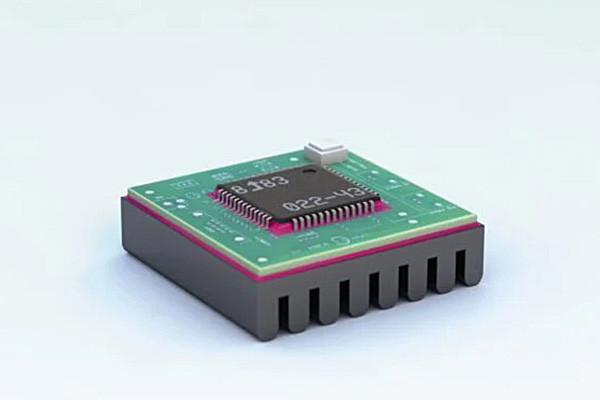
One standard method for removing epoxy conformal coatings involves using chemical strippers specifically formulated to dissolve the epoxy resin. These strippers typically contain harsh chemicals such as methylene chloride or N-methyl pyrrolidone, which break down the molecular structure of the epoxy, facilitating its removal from the substrate. While effective, this method requires careful handling due to the toxicity of the chemicals involved and may only be suitable for some applications, particularly those requiring environmentally friendly solutions.
Alternatively, mechanical methods such as sanding or scraping can physically remove the epoxy coating. While less reliant on hazardous chemicals, these methods are labor-intensive and can potentially damage the underlying substrate if not executed with precision. Additionally, they may not be feasible for intricate or delicate components where the risk of damage outweighs the benefits of removal.
In some cases, epoxy conformal coatings may be reworked through localized heating to soften the resin, allowing for easier removal or modification. This technique, known as thermal rework, relies on carefully controlled heating to avoid damaging the substrate while effectively loosening the epoxy coating. However, thermal rework requires specialized equipment and expertise to ensure proper temperature control and minimize the risk of thermal damage to sensitive components.
Overall, while epoxy conformal coatings present challenges in removal and rework, various methods and techniques are available to address specific requirements and constraints, whether through chemical dissolution, mechanical abrasion, or thermal rework, careful consideration of the application, substrate, and environmental concerns is essential to successfully removing or reworking epoxy conformal coatings while maintaining the integrity of the underlying components.
What are the alternatives to epoxy conformal coatings?
While epoxy conformal coatings are widely used for protecting electronic components and assemblies, several alternative coating materials are available, each offering unique properties and benefits. Understanding these alternatives is essential for selecting the most suitable coating material for specific applications. Here are some other options for epoxy conformal coatings:
- Silicone Conformal Coatings:Silicone coatings are appropriate for applications subjected to excessive heat or thermal cycling because of their exceptional flexibility and durability to high temperatures.
- Acrylic Conformal Coatings:Acrylic coatings provide good moisture and environmental resistance and are easy to rework and repair due to their solubility in various solvents.
- Polyurethane Conformal Coatings:Polyurethane coatings are perfect for complex settings where chemicals or solvents are present because of their exceptional chemical resistance and durability.
- Parylene Conformal Coatings:Parylene coatings provide uniform and pinhole-free coverage, excellent dielectric properties, and biocompatibility, making them suitable for medical and aerospace applications.
- UV Cure Conformal Coatings:UV-curable coatings offer rapid curing times and low VOC emissions, making them environmentally friendly and suitable for high-volume manufacturing processes.
- Fluoropolymer Conformal Coatings: Fluoropolymer coatings, such as PTFE (polytetrafluoroethylene) or FEP (fluorinated ethylene propylene), offer exceptional chemical and temperature resistance and low friction properties, suitable for demanding applications.
- Nano-coatings:Nano-coatings utilize nanotechnology to provide ultra-thin and highly protective layers with hydrophobicity, oleophobicity, and anti-corrosion properties, offering advanced protection for sensitive electronic components.
Each alternative coating material has its own set of properties, advantages, and limitations, which must be carefully evaluated based on the application’s specific requirements. By considering factors such as environmental conditions, mechanical stresses, electrical properties, and regulatory compliance, manufacturers can select the most appropriate alternative to epoxy conformal coatings to ensure the reliability and performance of their electronic assemblies.
How do epoxy conformal coatings compare to other types of conformal coatings?
In electronic protection, various conformal coatings are barriers against environmental factors compromising device performance and longevity. EpoxyEpoxy conformal coatings hold a significant place due to their versatility and effectiveness. However, understanding how epoxy conformal coatings compare to other types is crucial for selecting the most suitable option for specific applications. This section explores the distinguishing features and comparative advantages of epoxy conformal coatings relative to other conformal coating types.
Material Composition
Epoxy conformal coatings are formulated primarily from epoxy resins, which offer excellent adhesion and chemical resistance. In contrast, other types, such as acrylic, silicone, and polyurethane conformal coatings, utilize different base materials, each with its own properties and characteristics.
Application Method
The application method varies across different conformal coating types. While epoxy coatings typically require curing through heat or UV light, silicone coatings cure at room temperature, offering faster processing times. Acrylic coatings often feature aerosol or spray-on application methods, catering to diverse requirements.
Performance Characteristics
Epoxy conformal coatings protect against moisture, chemicals, and mechanical strain, which makes them perfect for harsh environments. Silicone coatings offer exceptional flexibility and high-temperature resistance, while acrylic coatings prioritize ease of reworkability and repairability.
Adhesion and Durability
Epoxy conformal coatings are renowned for their strong adhesion to various substrates, ensuring long-lasting protection even under extreme conditions. Comparatively, silicone coatings exhibit superior flexibility and conformability, accommodating substrates with irregular shapes or movements without cracking or delamination.
Chemical Resistance
Epoxy conformal coatings demonstrate excellent resistance to various chemicals, including solvents, fuels, and acids, making them suitable for applications in chemically aggressive environments. Silicone coatings offer unparalleled resistance to high temperatures and harsh chemicals, which is ideal for aerospace and automotive applications.
Environmental Considerations
When considering environmental impact, epoxy conformal coatings may contain volatile organic compounds (VOCs) and hazardous substances, necessitating careful handling and disposal practices. Silicone coatings, on the other hand, typically have lower VOC emissions and are more environmentally friendly, making them preferable for specific eco-conscious applications.
Cost and Accessibility
Epoxy conformal coatings often offer a cost-effective solution for electronic protection, with readily available formulations and competitive pricing. However, the cost may vary depending on specific application requirements and desired performance characteristics compared to other conformal coating types.
Epoxy conformal coatings present a robust and versatile option for electronic protection, offering excellent adhesion, chemical resistance, and durability. Understanding how these coatings compare to other types provides valuable insights for selecting the most suitable option based on application requirements, environmental considerations, and performance expectations.
What are the industry standards and regulations related to epoxy conformal coatings?
Epoxy conformal coatings protect electronic components from environmental factors such as moisture, dust, chemicals, and temperature variations. Understanding these coatings’ industry standards and regulations is essential for ensuring product reliability and compliance. Below is an overview of the crucial standards and rules governing epoxy conformal coatings, outlining their significance and implications for manufacturers and end-users.
Regulations:
- RoHS (Restriction of Hazardous Substances Directive) is a directive from the European Union that limits the use of some dangerous materials in electrical and electronic devices, including epoxy conformal coatings.
- REACH (Registration, Evaluation, Authorization, and Restriction of Chemicals) is a regulation aimed at ensuring the safe use of chemicals in Europe, impacting the composition and use of epoxy conformal coatings.
- Environmental Protection Agency regulations in various regions may dictate the use, handling, and disposal of certain chemicals used in epoxy conformal coatings.
Implications for Manufacturers:
- Compliance:Regarding industry norms and guidelines, it is essential for manufacturers to ensure product compliance and market acceptance.
- Testing and Certification:Manufacturers must conduct rigorous testing to ensure their epoxy conformal coatings meet the required standards and obtain the necessary certifications.
- Documentation: Detailed documentation of material composition, testing results, and compliance certificates is crucial for demonstrating regulatory compliance to customers and regulatory authorities.
Implications for End-Users:
- Reliability:Compliance with industry standards and regulations assures end-users of the reliability and durability of electronic products protected by epoxy conformal coatings.
- Environmental Impact:Awareness of regulations such as RoHS and REACH helps end-users make environmentally conscious choices and avoid products containing harmful substances.
- Warranty and Liability:End-users should verify that their products comply with relevant standards and regulations to mitigate risks associated with warranty claims and liability issues.
Adherence to industry standards and regulations related to epoxy conformal coatings is paramount for ensuring product quality, reliability, and environmental responsibility throughout the supply chain, from manufacturing to end-use. Manufacturers and end-users must stay informed about evolving standards and regulations to remain compliant and competitive in the electronics industry.
How do you assess the quality and performance of epoxy conformal coatings?
Assessing the quality and performance of epoxy conformal coatings is crucial to ensure the reliability and longevity of electronic components and assemblies. Several key factors should be considered during the evaluation process:
- Adhesion:Assess the coating’s adhesion to the substrate by performing adhesion tests such as tape tests, cross-hatch adhesion tests, or pull-off adhesion tests. A strong bond between the coating and substrate is essential to prevent delamination and ensure long-term protection.
- Thickness:Measure the thickness of the epoxy coating to ensure uniform coverage and adequate protection of the underlying components. Thickness can be measured using dry film thickness gauges or eddy current testing.
- Electrical Insulation:Evaluate the electrical insulation properties of the epoxy coating to ensure it provides sufficient insulation against electrical currents and prevents short circuits. Conduct electrical resistance testing to verify the coating’s dielectric strength and insulation resistance.
- Chemical Resistance:Test the epoxy coating’s resistance to chemicals, solvents, fuels, and other substances commonly encountered in the application environment. Expose coated samples to relevant chemicals and assess any appearance, adhesion, or performance changes.
- Environmental Resistance:Subject the epoxy-coated samples to environmental stressors such as temperature extremes, humidity, UV radiation, and thermal cycling to evaluate the coating’s resistance to these conditions. Perform accelerated aging tests to simulate long-term exposure and assess the coating’s durability.
- Mechanical Durability:Evaluate the epoxy coating’s mechanical durability by subjecting coated samples to mechanical stressors such as abrasion, impact, vibration, and flexing. Assess any signs of cracking, chipping, or peeling indicating inadequate mechanical protection.
- Rework and Repairability:Assess the ease of rework and repair of the epoxy coating, especially in cases where modifications or repairs may be necessary during the assembly process or throughout the product lifecycle. Evaluate the compatibility of the coating with solvents or stripping agents used for rework.
By carefully evaluating these factors, manufacturers can determine the quality and performance of epoxy conformal coatings and make informed decisions to ensure the reliability and integrity of their electronic assemblies in various applications and operating environments.
What are the future trends in epoxy conformal coating technology?
As electronic devices advance in complexity and miniaturization, the demand for reliable and durable conformal coatings becomes more crucial. Epoxy conformal coatings, known for their excellent protective properties, are poised to evolve further to meet the emerging challenges and requirements of the electronics industry. In this section, we explore the future trends shaping epoxy conformal coating technology, from innovative materials to enhanced application techniques, and their implications for the next generation of electronic devices.
Nanotechnology Integration:
Integrating nanotechnology into epoxy conformal coatings holds immense potential for enhancing their protective properties. Nanoparticles, such as nano-clay or nano-silica, can be incorporated into epoxy formulations to improve barrier properties, increase mechanical strength, and enhance resistance to environmental factors like moisture and corrosion.
Self-Healing Capabilities
Future epoxy conformal coatings may incorporate self-healing mechanisms to repair minor damages or microcracks autonomously. This innovative technology, inspired by natural biological processes, could significantly extend the service life of electronic devices by mitigating the effects of wear and tear over time.
Environmentally Friendly Formulations
The development of environmentally friendly formulations for epoxy conformal coating technology is expected to occur in the future, given the increasing focus on sustainability and environmental responsibility. Manufacturers are exploring bio-based resins, renewable raw materials, and low-VOC formulations to reduce environmental impact while maintaining high-performance standards.
Advanced Application Techniques
Advancements in application methods, such as 3D printing or selective laser deposition, are expected to revolutionize the application of epoxy conformal coatings to electronic components. These advanced methods offer precise control over coating thickness and distribution, enabling tailored solutions for complex geometries and intricate assemblies.
Functionalized Coatings for Enhanced Performance
Future epoxy conformal coatings may incorporate functional additives, such as conductive fillers or antimicrobial agents, to impart additional functionalities beyond traditional protection. Functionalized coatings could enable applications in emerging fields like flexible electronics, wearable devices, and bioelectronics, opening new avenues for innovation and integration.
Smart Coating Technologies
The advent of intelligent coating technologies, including sensors and responsive materials, could transform epoxy conformal coatings into active components that monitor environmental conditions or provide real-time feedback on device performance. These innovative coatings hold immense potential for applications in IoT devices, automotive electronics, and aerospace systems, where predictive maintenance and condition monitoring are critical.
Conclusion
In conclusion, epoxy conformal coatings play a crucial role in safeguarding electronic components from various environmental factors, ensuring their longevity and reliability. By understanding the principles, applications, and best practices associated with epoxy conformal coatings, professionals can make informed decisions in selecting, applying, and maintaining these coatings effectively. As technology advances and new challenges emerge, staying updated with the latest developments in epoxy conformal coating technology will remain essential for ensuring the continued protection and performance of electronic devices.
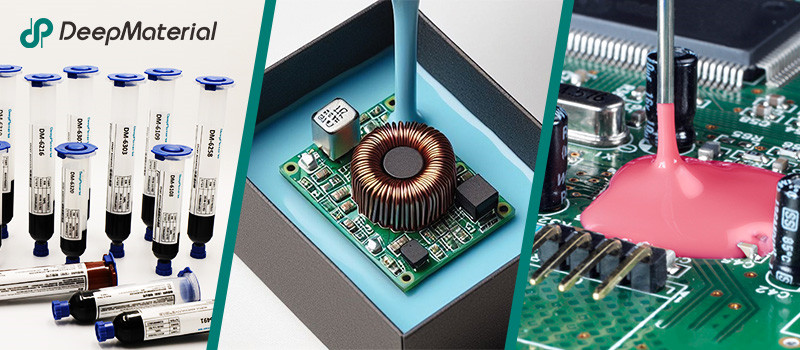
About DeepMaterial
DeepMaterial is a trusted supplier of encapsulant materials that are used in electronics manufacturing worldwide. From chip on board encapsulants such as glob top material to conformal coatings, underfills, low pressure molding, and potting solutions, DeepMaterial offers a full range of circuit board protection materials that effectively protect circuit boards while help reduce costs. More…Deepmaterial is a the manufacturer of epoxy adhesives including hardeners, metalbond, and metal filled resins. Structural, toughened medium viscosity, and non-sag adhesives are also offered. Some adhesives are resistant to thermal shock, chemical, vibration dampening, and impact. Suitable for metals, plastics, wood, and ceramics. Serves electronics, aerospace, automotive, tooling, marine, and construction industries. REACH and RoHS compliant. FDA approved. UL listed. Meets military specifications. We are the one of best adhesive manufacturers in China.
Blogs & News
Potting compounds are at the frontline of electronics assembly, delivering effective protection in challenging environmental conditions while improving mechanical strength and offering high electric insulation. Used within a variety of industries, electrical potting compounds are found within a broad range of consumer electronics, as well as used in applications across the automotive, aerospace, and other industries where electronic assemblies are prevalent.
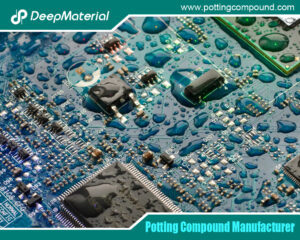
The Comprehensive Guide to Epoxy Potting Compound Manufacturers
The Comprehensive Guide to Epoxy Potting Compound Manufacturers Epoxy potting compounds are essential materials in the electronics industry, providing robust protection for sensitive components against
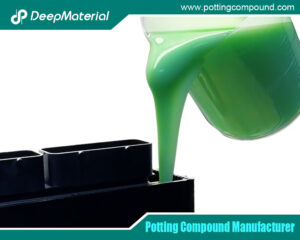
The Essential Guide to Potting Materials for Electronics
The Essential Guide to Potting Materials for Electronics In the rapidly evolving field of electronics, ensuring device reliability and longevity is critical. One of the
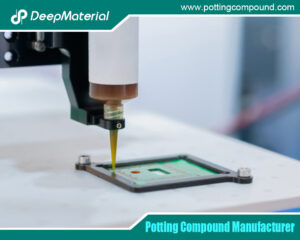
The Expanding Horizon of the Mini Silicone Optical Glue Market
The Expanding Horizon of the Mini Silicone Optical Glue Market The mini silicone optical glue market is witnessing unprecedented growth, fueled by technological advancements and
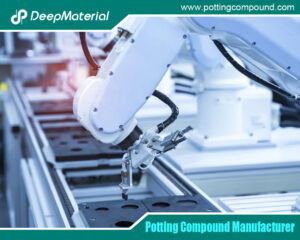
The Comprehensive Guide to PCB Potting Services: Ensuring Reliability in Electronics
The Comprehensive Guide to PCB Potting Services: Ensuring Reliability in Electronics Printed Circuit Boards (PCBs) are the backbone of modern electronics, enabling functionality in
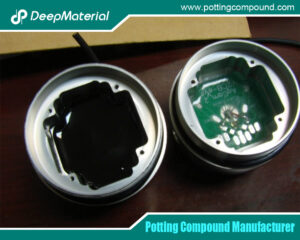
Comprehensive Insights on PCB Encapsulation in Potting Material
Comprehensive Insights on PCB Encapsulation in Potting Material In the fast-evolving landscape of electronics, ensuring the durability, reliability, and longevity of printed circuit boards
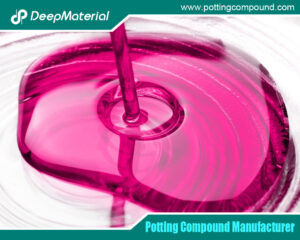
The Vital Role of Industrial Silicone Adhesive Manufacturers in Modern Industry
The Vital Role of Industrial Silicone Adhesive Manufacturers in Modern Industry In today’s fast-paced industrial landscape, the demand for reliable and durable adhesives is

